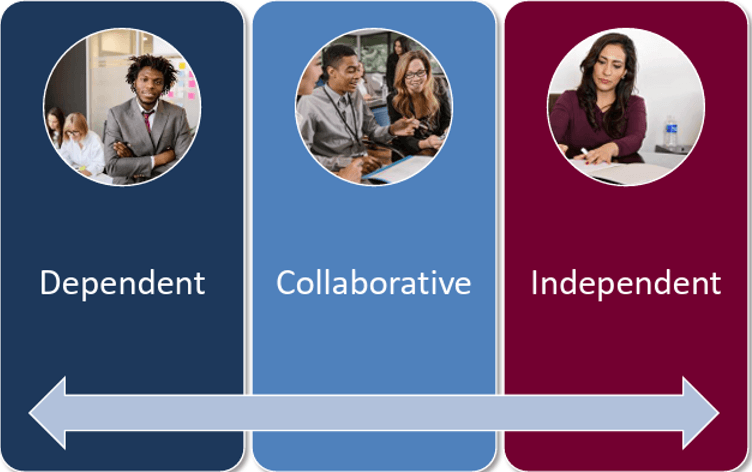Photo by: geralt Images via Canva
Have you ever thought about your training style and where it comes from? Why do you teach the way you do? Is it based on your own schooling or experience? Is it tied to your comfort level? In the world of training, we have a continuum of training styles.
At one end, we have a Dependent Training Style (D). This means the learners are dependent on the trainer. In this style, the trainer controls most of the activities. Typically, this would include lectures, demonstrations, and individual exercises. This reminds me of the expression, “Sage on the stage.”
At the other end, we have an Independent Training Style (I). With this style, the learners work more independently, and the trainer gives more control to the learners. The learners are self-directed and explore the content on their own. This makes me think of the expression, “Guide on the side.”
In between these two styles, we have a Collaborative Training Style (C). In this case, learners rely on each other as much as the trainer. There is a partnership that is taking place. Here, we incorporate discussions and group work.

Newer instructors tend to have a more dependent training style. The more experienced you become as a facilitator, the more comfortable you are with a collaborative or independent training style. But the bigger question is, “What do my learners need at this moment and how do I accommodate their needs?”
Your job as an instructor is to read the group dynamic and adapt your style accordingly. You’re thinking about the following questions: What is their experience level? What skill am I teaching? How much time do I have? How motivated are they for the class?
If you know me, you know my style is much more collaborative and even independent. I prefer to ask questions and incorporate small group activities. I like it when the learners are in control of their own learning. However, there are times when I must turn on the “D.” For example, when I need to give learners feedback on their performance, or I need to get learners back on time from break.
It’s like we’re doing a dance. Thank you, Kenny Rogers, for the lyrics: “You’ve got to know when to hold ‘em, know when to fold ‘em, know when to walk away, and know when to run.” Well, hopefully, we’re not running away! We’re moving along this continuum from dependent to independent, adapting our style to meet our learners’ needs.
Additional Resource: How to Determine Your Training Style [Video]
If you would like to learn more about your training style and how to adapt your style, check out our Advanced Instructional Techniques workshop. You’ll take your facilitation skills to a new level by creating a positive climate for learning, leading discussions, and motivating your learners.
